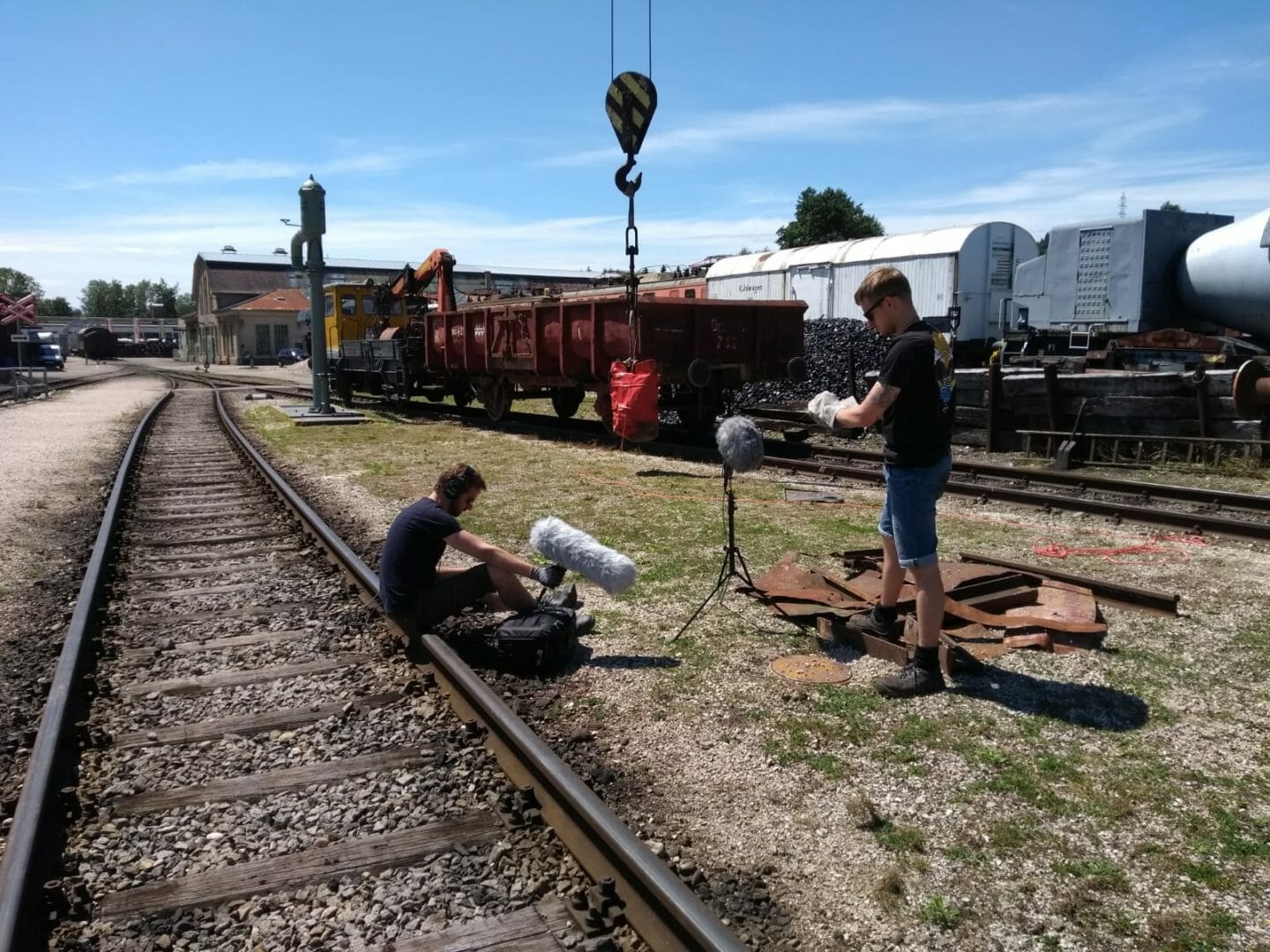Creative Chronicles: Audio
October 19 2021 | Legacy Project | Studio
Creative Chronicles brings together key insights, information and statistics from the experts at Creative Assembly. We hope this will inspire students and those considering a career in game development.
This edition of Creative Chronicles focuses on Audio.
THE POWER OF GAME AUDIO
Players increasingly expect more from games and the quality of audio production is no different. Dynamic soundscapes are complex but when done well, they are key to player immersion.
The interactive nature of gameplay stands it apart from the music and film industries where audio is linear. With games, it is not possible to know exactly what the player will do and where they will go, the audio must account for these complexities, creating sound for different locations, interactions, characters and events.
Because of this, game audio is integral to the overall game design.
With the possibility of multiple activities happening on screen, game sound must convey action clearly and in different ways. It increases player understanding of objectives and can act as a guide. A huge amount of game design involves communicating information to the player, whether it’s that enemies are nearby or health is low, and a lot of the time this is done through audio.

AUDIO DISCIPLINES
There are five core disciplines that fuse together to deliver the audio experience you hear in video games: Sound Design, Music Production, Dialogue Production, Audio Programming and Audio Testing.
Game audio is a complex gameplay tool, it can add weight and physicality to visual elements on screen, provide ambience, support storytelling, or score emotional cues. The audio disciplines combine to create a soundscape that isn't confined to the screen and when used effectively, can help totally captivate the player. That is a broad description of what collectively game audio does and in reality, the job involves many responsibilities and skill sets that vary depending on the genre, scope, timescale and budget.
A career in game audio can be intensely satisfying. You get to work as a part of a team that consists of numerous disciplines, each with their own specialist skillset, utilising complex tools and working together towards a common goal of creating the best possible audio experience for the player.
- Sound designers will record, create, implement and mix audio assets.
- Dialogue designers will cast actors to play characters within the games then record their lines, edit and implement them.
- Music designers will create and implement dynamic music tracks which respond appropriately to complex situations in-game in real time.
- Audio programmers create exciting new tech and tools that enable the creative disciplines to create world class audio.
- Audio testers act as a safety net, testing the assets and systems, ensuring that everything works as intended and catching any bugs in the process.

EMBEDDED AUDIO
The audio team works alongside many other disciplines. In contrast to other industries, audio production in games is not a post-production role and that’s why it benefits from being embedded within a game development studio.
The team collaborate with animators, artists, game designers and programmers to achieve creative goals. Often, audio will start to take shape before the feature it is designed for has been produced; in these instances, audio is part of the process and helps to inform the end result as opposed to servicing a finished product.
For audio specialists, there is a huge amount of creative freedom and variety in this approach. On any given day sound designers could be working on location, field recording or creating foley integral to producing unique sound effects. Dialogue engineers can be working through casting auditions or recordings for monsters or in-game characters with well-known actors. Music recording with live orchestras and choirs might be taking place at international studios.

AUDIO AT CREATIVE ASSEMBLY
To achieve the signature sci-fi sounds of the Halo universe, the fear inducing screeching of the iconic Alien in Alien: Isolation, or the ferocious screams and carnage of the battlefield in Total War, our Audio team are involved in a huge array of creative sound endeavours that incorporate the numerous disciplines within the audio department.
Our state-of-the-art audio facilities and well supported frameworks set the stage for success:
- 21 On-site commercial grade sound suites.
- 3 On-site live rooms for foley, dialogue and musician sessions.
- Core discipline focused staff with dedicated sound design, dialogue, music, audio code and audio testing personnel.
- Dedicated custom sound effects recording sessions.
- State of the art monitoring and recording equipment.
RESOURCES:
- The Audio of the Aegean: Swords, Shields and Seas in a Total War Saga: Troy
- Creative Chronicles Dev Sessions: From Immersive soundscapes to mass battles | Creative Assembly
- Total War: Three Kingdoms wins at MCV Develop Awards 2020 for Audio Innovation of the year
- Game Developer article: Behind the audio of Total War: Three Kingdoms.
- Twisting, Chewing, Stabbing & Mangling: Bringing the undead To Life With Audio in Total War: Warhammer 2
- Revisit the sound design of Alien: Isolation with interviews from Creative Assembly on Sound Architect and AudioTechnology.
- James Magee breaks down the different aspects of game audio in this must read for any aspiring Sound Designers.
- BBC News discovered the art of game audio, featuring Alien: Isolation.
- Audio Lead, Sam Cooper and Senior Sound Designer, James Magee talk about explosives, flamethrowers and balancing competing sounds in Halo Wars 2.
- Audio Director, Rich Beddow, talks about how the fantastical sound of Total War: WARHAMMER II is achieved. You can also read past articles on composition workflow for orchestral soundtracks and scoring for Total War.
- Creative Chronicles: Getting to grips with group vocalisations and Managing Complexity in Game Audio Creative Chronicles: Managing Complexity in Game Audio




